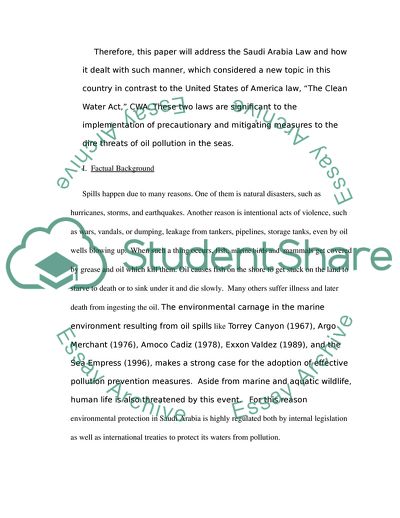Analysis of Clean Water Act in Saudi Arabia Essay Example | Topics and Well Written Essays - 3250 words. https://studentshare.org/environmental-studies/1730351-analysis-of-clean-water-act
Analysis of Clean Water Act in Saudi Arabia Essay Example | Topics and Well Written Essays - 3250 Words. https://studentshare.org/environmental-studies/1730351-analysis-of-clean-water-act.


